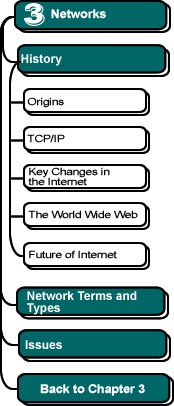

|
Domain Name System (DNS)
The 1980s also introduced the domain name system (DNS) into the Internet. In 1984, this new scheme for referring to Internet sites was deployed.
The fundamental addressing scheme of the Internet is in terms of IP addresses. However, they are difficult to remember! Imagine having to send e-mail to a Calvin friend at jdoe@153.106.4.1.
 It
was for this reason that DNS was developed.
It
was for this reason that DNS was developed.
A domain is a registered range of IP addresses. However, these registered addresses are also associated with a domain name (e.g., calvin.edu).
Thus, the DNS system is rather like an Internet "phonebook." A phonebook allows you to look up numbers in reference to a name. Similarly, if you supply the DNS with a domain name it will convert it into a number: an IP address. This enables us to send e-mail and browse the Web using names instead of numbers.
When a DNS server translates a name into an IP addresses, this is called resolving that name.
![]()
![]()
This chapter was written by Jeff Nyhoff and Joel Adams. Copy editing by
Nancy Zylstra
©2005 Calvin University (formerly Calvin College), All Rights Reserved
If you encounter technical errors, contact computing@calvin.edu.